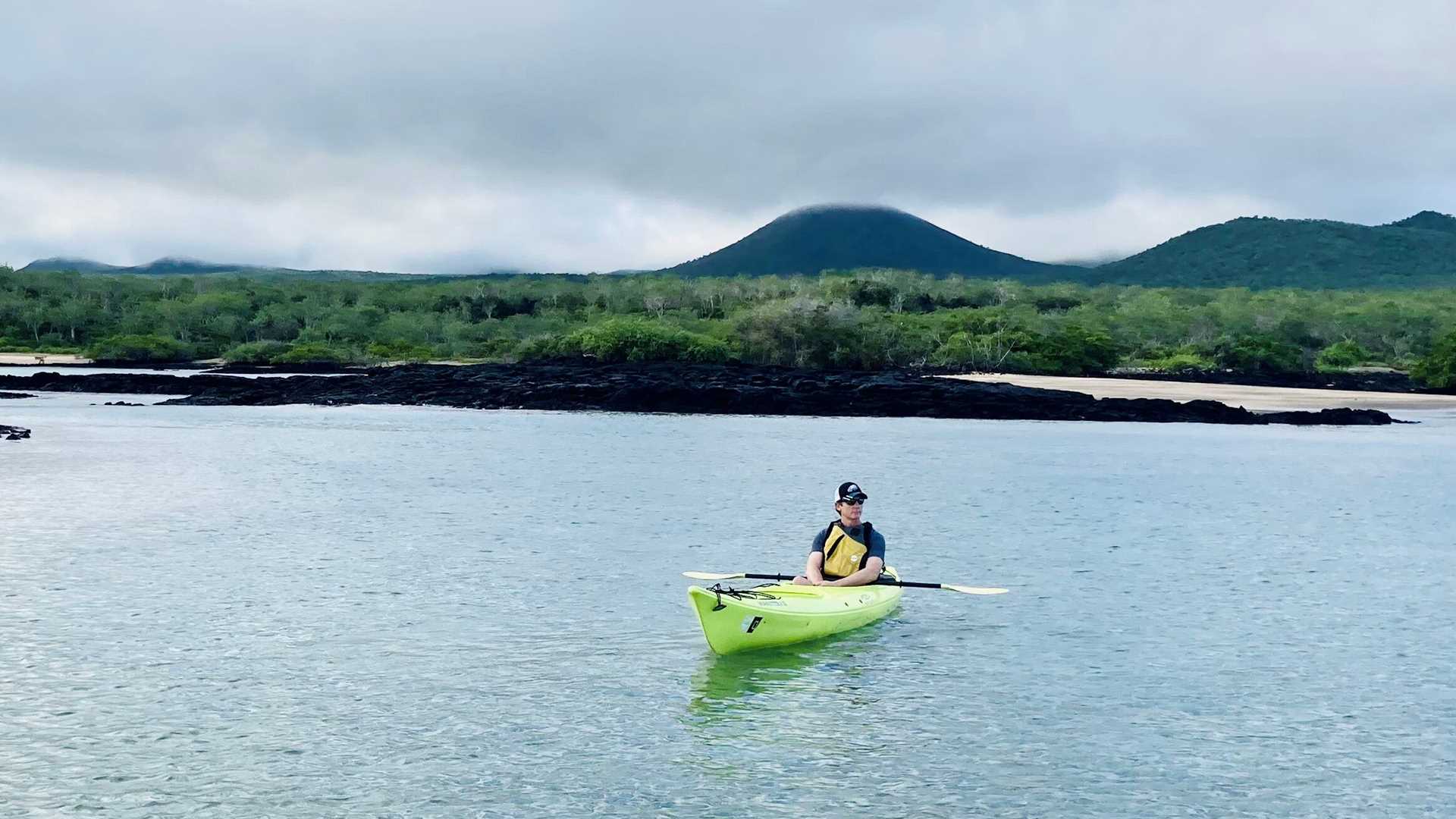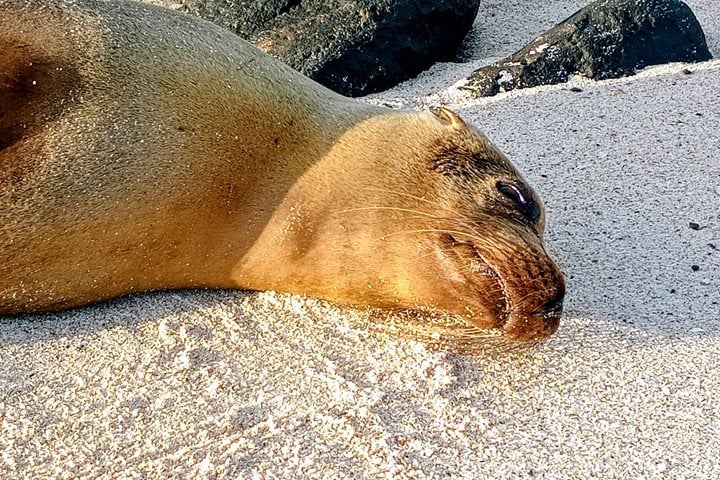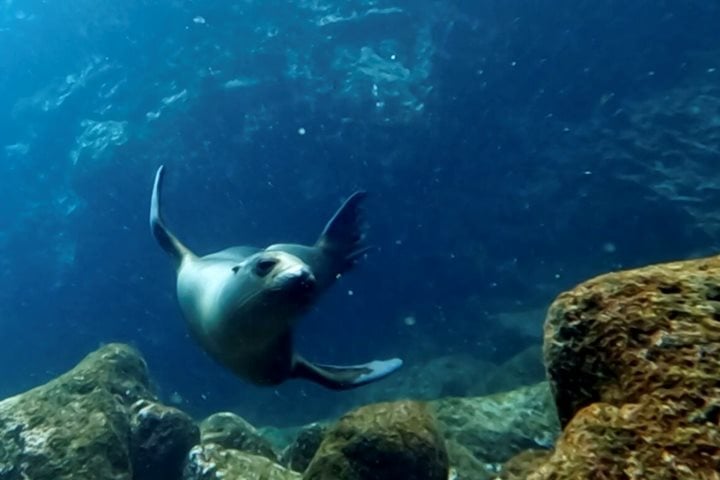National Geographic Islander spend the whole day in Floreana Island. We enjoyed a visit to Post Office Bay, a historical site for the oldest “post office” in Ecuador. Starting in the 17th century, pirates used to leave behind letters for other boats to pick up and deliver to their destination. Still today, it remains a tradition for visitors to leave postcards and take away ones they can deliver to locations near their homes.
Close to this area, we kayaked in the company of sea lions and marine turtles.
We then snorkeled at Champion Island, an islet near Floreana. We had the chance to observe a colony of playful sea lions, sharks, and many different fish.
Punta Cormorant was misty in the afternoon, but it offered us the chance to find Galapagos flamingos in a brackish water lagoon. At the end of the trail, we found the perfect spot to end our day. On a white sand beach, we observed the mating behavior of spotted eagle rays.







